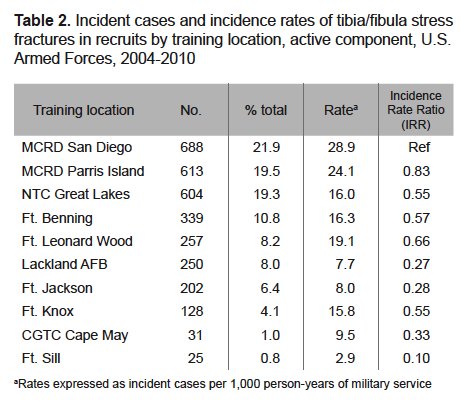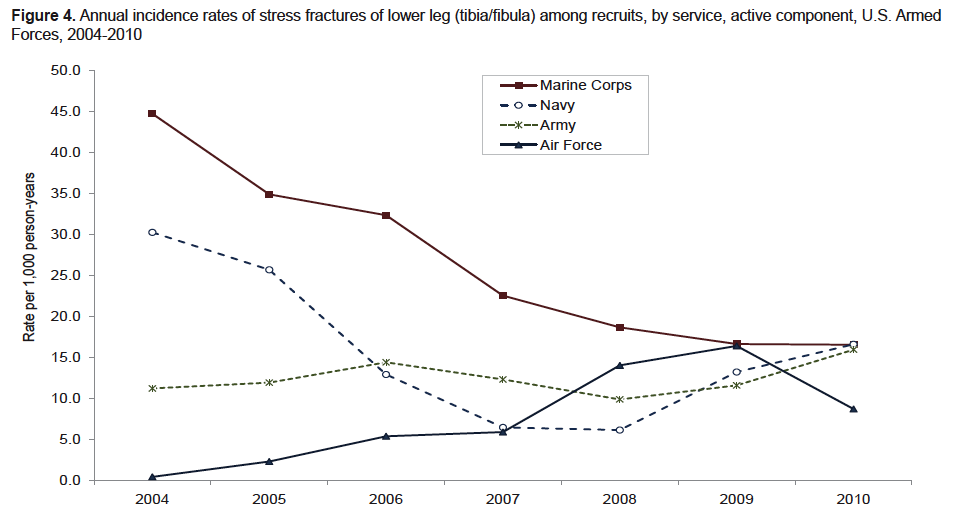There’s an easy way to figure out which military service has the toughest basic training — all you have to do is count how many recruits break their legs. Using that standard, there’s no competition: the U.S. Marine Corps crushes its recruits’ lower-leg bones far more often than the Air Force, Army, Coast Guard or Navy.
The data are contained in a new military report that traces stress fractures from 2004 to 2010 for both recruits and troops already in the force. Across all the services, recruits suffered such fractures 18 times as much as non-recruits. The reasons aren’t surprising: many young Americans don’t exercise much, and the rigors of boot camp — long marches, jumping jacks, runs — sprain a lot of ankles and break a lot of bones. But a deeper dive into the numbers shows a marked difference in bone-crunching rates among the five services’ recruiting bases.
The Marines’ San Diego training station is the toughest in the nation: 688 recruits broke lower-leg — tibia and fibula — bones there from 2004 to 2010 (that translates into a rate of 28.9 fractures per 1,000 years of training). Ranked No. 2 on the list is the Marines’ Parris Island base, with 613 breaks and a 24.1 rate. The Navy’s lone Great Lakes boot camp near Chicago had 604 fractures (16.0 rate) to claim the third spot. The Air Force, Army and Coast Guard brought up the rear.
“Repetitive weight-bearing activities, particularly running and marching, are the most frequently reported causes of stress fractures,” the study, Stress Fractures, Active Component, U.S. Armed Forces, 2004-2010, says. Stress fractures aren’t complete breaks in the bone. Generally, they’re caused by repetitive, weight-bearing stresses — such as running — that lead to hairline cracks. They can be painful, and are relieved by rest. Stress fractures occur most often in the lower leg and foot bones, and happen twice as often among women as men in the U.S. military, according to study author Army Captain Dara Lee, a doctor.
Broken bones are a big problem for the military. “Among basic trainees, stress fractures account for more lost duty days and training recycles (i.e., delays in the completion of training) than any other training-related injury,” the study says.
So what’s the military doing about this “significant obstacle…to military operational effectiveness”? The numbers have dropped in both the Marines and Navy recently — while rising among Air Force recruits — as basic training has gotten softer — or tougher. The Army’s rate has remained fairly stable. This has been an issue for decades, as this piece I did nearly 14 years ago suggests.
The Marines’ new training “aimed to reduce injuries by increasing recovery time between intense physical training.” The Navy has changed its boot camp and now requires “an increase in the minimum hours of sleep at night and a reduction of cumulative marching distance during recruit training.” Air Force stress fractures may be rising due to “toughened recruit physical fitness standards,” although its 2010 rate was the lowest among the services. “The findings indicate that recruit training schedules can be designed to minimize stress fracture risk,” the report concludes, “without compromising the military training mission.”




